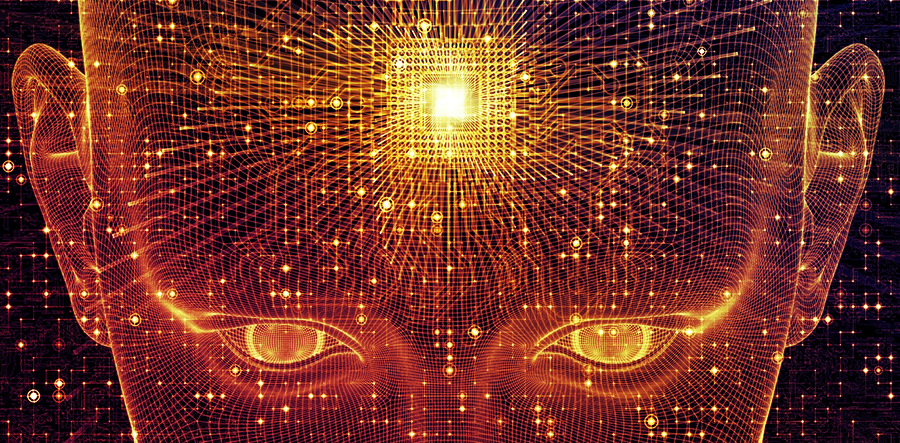
There is no more important quest in the whole of science probably than the attempt to understand those very particular events in evolution by which brains worked out that special trick that enabled them to add to the cosmic scheme of things: colour, sound, pain, pleasure, and all the other facets of mental experience.
Sigmund
Freud’s
personality theory
Sigmund Freud
Sigmund Freud (1856-1939), the father of psychoanalysis, spent
much of his life developing an intricate theory of how the psyche, or mind,
operates. Central to Freud's theory, and perhaps his greatest contribution to
psychology, is the knowledge that psyche consists of parts that are conscious,
preconscious, and unconscious
Conscious, presconscious and unconscious
The conscious mind is what
you are aware of at any particular moment. It includes your present
perceptions, memories, thoughts, fantasies, feelings, what have you.
Presconscious
(available memory) involves anything that can easily be made conscious.It
includes memories you are not at the
moment thinking about but can readily bring to mind.
Now no-one has
a problem with these two layers of mind. But Freud suggested that these are the
smallest parts! The largest part is the unconscious. It includes all the things that are not
easily available to awareness, According
to Freud, the unconscious is the source of our motivations, whether they be
simple desires for food or sex, neurotic compulsions, or the motives of an
artist or scientist.
3 parts of personality
Freud believed that personality has three structures: the id,
the ego, and the superego.
·
Id
According to Freud, the Id is the most primitive part of our
psyche. We are born with the id and it residues within the unconscious.
The id is driven by primitive animal instincts including sexual
and aggressive impulses. It functions according to the pleasure principle. This seeks to maximize pleasure and
minimize any discomfort. So, it is
demand to take care of needs immediately. The id is illogical. It seeks
pleasure without thought to what is practical, safe, or moral. Freud argued
that we are not aware of the id, but it influences our behavior.
· · Ego
The Freudian structure of personality that deals with the
demands of reality. The ego is called the “executive branch“ of personality because
it makes decisions. The id and the ego have no morality. They do not take into
account whether something is right or wrong. Freud posted that the ego is the
second part of the psyche to develop.
The ego functions according to the reality principle because its job is to gratify the id in
accord with reality. Ego is responsible for taking care of a need as soon
as an appropriate object is found.
It operates on all three levels of awareness (the conscious,
preconscious, and unconscious levels of the psyche). The ego, or that part of
the psyche that is your sense of self, has a very difficult job. It must
satisfy both the id and superego. It must gratify the id's primitive,
instinctual needs within the constraints of reality and within the moral
standards of the superego.
·
Superego
The superego is the
Freudian structure of personality. It
is “ the moral branch“ of
personality. The superego takes into account whether something is right or
wrong. The last part of the psyche to
develop is the superego. At five or six years of age, we begin to learn about
the norms, rules, and values of society. Freud argued that children internalize
these rules to form the superego, which functions as a very strict conscience.
The superego operates according to the morality principle. It seeks what is good and moral above all else.
In that sense, Freud argued that it is just as illogical as the id. Like the
ego, the superego functions on all levels of awareness.
There are two aspects to the superego:
One is the conscience, which is an internalization of punishments and warnings. The other is
called the ego ideal. It derives from rewards and positive models presented to the child. The
conscience and ego ideal communicate their requirements to the ego with
feelings like pride, shame, and guilt.
Life instincts and the death instinct
life instincts. These instincts perpetuate (a) the
life of the individual, by motivating him or her to seek food and water, and
(b) the life of the species, by motivating him or her to have sex. The
motivational energy of these life instincts he called libido
Freud began to believe that "under"
and "beside" the life instincts there was a death instinct. He began to believe that every person
has an unconscious wish to die.
The stages
As I said earlier, for Freud, the sex drive is the most important motivating force. Freud noted that, at different times in our
lives, different parts of our skin give us greatest pleasure :
·
The oral stage lasts from birth to about 18 months. The focus of pleasure is, of course,
the mouth. Sucking and biting are
favorite activities.
·
The anal stage lasts from about 18 months to three or four years old. The focus of
pleasure is the anus. Holding it in
and letting it go are greatly enjoyed.
·
The phallic stage lasts from three or four to five, six, or seven years old. The focus of
pleasure is the genitalia.
Masturbation is common.
·
The latent stage lasts from five, six, or seven to puberty. During this stage, Freud
believed that the sexual impulse was suppressed in the service of learning.
·
The genital stage begins at puberty, and represents the resurgence of the sex drive in adolescence, and the more specific
focusing of pleasure in sexual
intercourse. Freud felt that masturbation, oral sex, homosexuality, and
many other things we find acceptable in adulthood today, were immature.







No comments:
Post a Comment